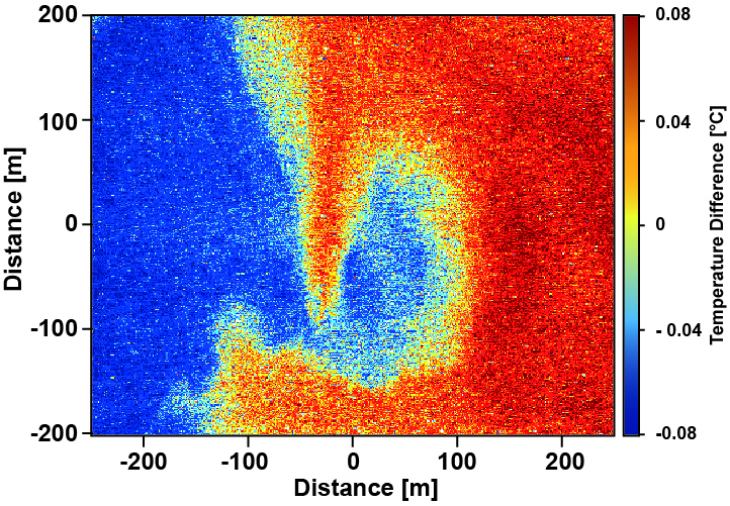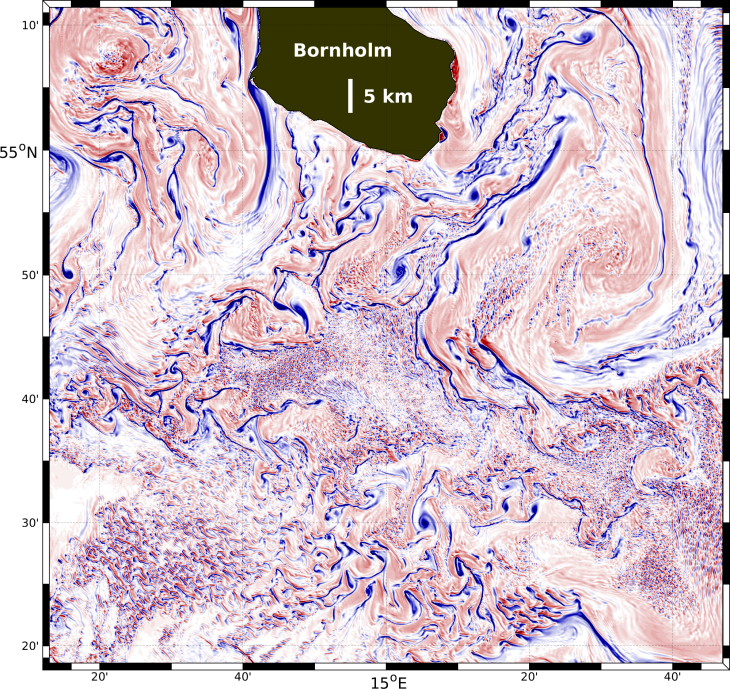The First Results
Scientists collected massive amounts of data with the help of different research instruments during the “Clockwork Ocean” expedition. This data is now to be evaluated. The process usually takes a great deal of time because the data must first be saved and inspected. The analysis then begins: the methodical process used by the scientists must be reproducible. The scientists ultimately wish to better understand the complex processes within the eddies in order to assess what role they play in the energy transport and the food chain in the sea.
What is certain: The team could, for the first time, measure an eddy from its emergence to its collapse. The images from the special cameras have confirmed that cold water is pulled into the inner portion of the eddy and transported upward. In a resolution never seen before, the measurements show that this movement is much faster than in large eddies and that cold water is intensely mixed with warm water. The small eddies thereby bring nutrients from the lower levels of the water column upwards to the surface. Once there, they hit sunlight: ideal conditions for algae growth exist here and are crucial for the beginning of the food chain as well as for life in the sea.
By comparing computer models, the scientists can also confirm that the small eddies occur all over the oceans. The researchers therefore assume that eddies are of global importance: the energy transport and the lives of fish and whales – and therefore our own lives as well – are affected by the eddies.
The clockwork ocean is closely interwoven with the weather and climate of our planet, but it will still take a great deal of time to completely comprehend.
The scientists are continuously working on the expedition’s data analysis.

Video showing overlays of marine radar data collected by the RV Ludwig Prandtl and infrared imagery acquired by the Zepplin on 22nd of June, 2016, between 09:42 and 09:55 UTC. In addition the vectors show the mean currents measured by the Acoustic Dopper Current Profiler (yellow vectors) as well as the drift tracks of the surface drifters (coloured dots).
Waterfront

Sharp fronts in the ocean are produced through currents and at the boundaries of various water masses. Due to close interaction between the current and biological processes, a concentration of cyanobacteria occurs in this front south of Bornholm.
Temperature Distribution

The high-resolution infrared camera on the zeppelin displays a momentary temperature distribution image for a small eddy. The eddy measures approximately three hundred metres in diameter and is recognizable by its cold core (in blue).
Salinity

Salinity at the sea surface on June 20th, 2016, calculated with a high-resolution mathematical model. Low salinity is represented in blue, high salinity in red.
Vorticity

Eddy intensity of the current at the sea surface on June 20th, 2016, calculated using a high-resolution mathematical model. Red represents clockwise eddy rotation; counter clockwise rotation is shown in blue.